RetPara
SOF Support
It's been changed back to an MI Brigade? WTF?
525th Military Intelligence Brigade Unveiled on Fort Bragg | Military.comThe 525th Battlefield Surveillance Brigade has been redesignated as an expeditionary military intelligence brigade -- the first of its kind.
Some O-6 needed a bullet on his/her OERIt's been changed back to an MI Brigade? WTF?
The Battlefield Surveillance Brigades (BFSB) started out with an intelligence, reconnaissance, and surveillance mission - sending elements out to gain intelligence for the commander. To me it was a great idea, the consolidation of function allowed for greater training management and execution, especially on highly technical collective skills. However, the organization of the Army made it move towards a maneuver element as LRRS, a lot of aviation, and much of the scouting functions were under the maneuver rubric. MI folks stopped leading the organizations so they became another maneuver command. MI 2020 (which is the Army vision for intelligence organization over the next several years) tried to align MI formations into a more standardized construct - the same with their support relationships. They took all of the MI pure elements out of the BFSBs and made them Expeditionary Military Intelligence Brigades (E-MIBs) and renamed the existing Theater Intelligence Brigades (TIB) as Military Intelligence Brigade Theater (MIB-T). I'm in a MIB-T myself.
He was explaining how innovative his BCT had been because 'sometimes they launched operations just to gain intelligence.' I mean, we're talking about a BCT CDR, someone who graduated Ranger school, was selected CSL for command twice, and has spent 20+ years dedicated to the profession of arms - and this motherfucker thinks he just invented fighting for intelligence.
The issue they're trying to deal with is control, i.e. do intel whackers get a command, set training requirements and standards, and perhaps most important to senior leaders do they control the budgets and billets for these organizations.
I think the operating paradigm in Army MI, as envisioned by the DA G-2, is intelligence is just something you do in a room with an internet connection. It's a terrible mistake in my view and will be proven so the next war when the intel is all fucked up AGAIN.
I'm just troubled on how far the pipeline for army MI is with DIA. There is nothing to be learned in the enlisted pipeline
There used to be funding (REDTRAIN) that would send junior NCO's and enlisted to work at national or theater level organizations. The problem being is that in MI units that often cut down on the number of available troops for details as the opportunities were months long.
Another source of learning is the unit Staff Weather Officer. If your at the Battalion or Brigade level it can be a PITA to make this work, but getting a basic understanding of meteorology can reduce the 105 rounds in direct fire mode from the Commander when 'What's weather going to be tomorrow 2?' .
